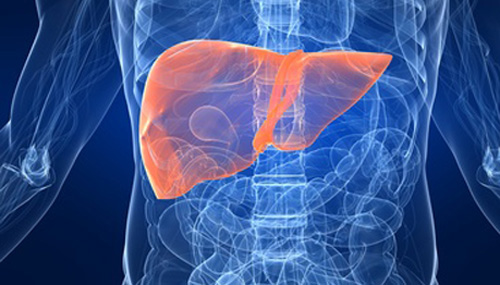The results of a newly reported study have confirmed that an amino acid compound developed by researchers at Michigan Medicine successfully treated nonalcoholic steatohepatitis (NASH) in non-human primates. The study findings showed that the compound, DT-109, reversed fat build up and prevented scarring in the livers of both mouse and primate models of NASH.
“For years, scientists have been trying to develop a medication that treats NASH, but many attempts have failed to show an improvement or have raised safety concerns in clinical trials,” said Eugene Chen, MD, PhD, the Frederick G. L. Huetwell Professor of Cardiovascular Medicine at University of Michigan Medical School. “NASH is rising at a staggering rate, and successful treatment of non-human primates with our drug candidate, DT-109, brings us closer than ever to treating the millions of people suffering from this condition.”
Reporting on their findings in Cell Metabolism “DT-109 ameliorates nonalcoholic steatohepatitis in nonhuman primates,” senior author Chen and colleagues concluded, “Our studies describe a highly translatable NASH model and highlight the need for clinical evaluation of DT-109.”
The worldwide prevalence of nonalcoholic fatty liver disease (NAFLD) and its more severe form, NASH, is increasing at what the researchers note is “an alarming rate,” with the overall prevalence of NAFLD estimated to be 32.4%, and up to 6.5% of the general population being affected by NASH. “NAFLD and NASH have become the primary cause of chronic liver disease worldwide and are associated with increased cardiovascular-, cancer-, and liver-related mortality,” they stated.
NASH is the second stage of nonalcoholic fatty liver disease, and causes scarring and inflammation in the liver. While fatty liver disease can be treated with exercise and nutritional intervention, the liver damage from NASH is more permanent. It has become the primary cause of chronic liver disease, and NASH-related cirrhosis is now one of the most common reasons for liver transplantation. However, there are still no pharmacological treatments for the disease. “While numerous compounds are currently being evaluated for NASH, many have either failed to show an improvement or raised safety concerns in clinical trials,” the authors pointed out. “A major hurdle in the development of drugs for NASH is a failure of translating findings from preclinical studies to clinical settings.”
Chen and his team developed the glycine-based tripeptide—(Gly-Gly-Leu)—DT-109 for treating NASH in non-human primates after reports by the Chen group, and others showed that impaired glycine metabolism emerged as a cause of nonalcoholic fatty liver disease and NASH.
While hundreds of compounds have successfully treated NASH in mice, including DT-109, but as Chen pointed out, murine NASH models are limited because not all aspects of the human disease are accurately mirrored in mice and, therefore, are not easily translatable to the clinic. The research team’s non-human primate model for NASH, confirmed using multiomics profiling studies, is among the first to accomplish the feat. “… by screening for NASH-predisposed monkeys, utilizing a newly developed NASH diet, and combining biochemical, histological, and transcriptional analyses, we established an NASH model in cynomolgus monkeys that closely mimics the human disease.”
Through studies in both the non-human primates and in mice, the investigators confirmed that treatment with DT-109 reversed fat build up and prevented fibrosis progression by stimulating fatty acid (FA) degradation and antioxidant formation. “… a combination of unbiased transcriptomics and proteomics together with histological and biochemical verification revealed that DT-109 induces FA degradation and suppresses proinflammatory and fibrotic responses in nonhuman primates with established NASH,” the authors stated.” The tripeptide also inhibited the production of lithocholic acid (LCA), a toxic secondary bile acid (BA) closely linked to nonalcoholic fatty liver disease. “… untargeted and targeted metabolomics revealed that treatment with DT-109 lowers circulating BAs during NASH with a most significant reduction in the secondary and hepatotoxic BA, LCA.”
Noting some limitations of their study, the researchers nevertheless concluded, “Altogether, the therapeutic potential of DT-109 in NASH warrants clinical evaluation either as a monotherapy or a combined regimen with other drug candidates.”
“With this significant breakthrough in preclinical models, we can now consider evaluating DT-109 as a potential drug candidate for the treatment of NASH in future clinical trials,” said Jifeng Zhang, PhD, co-corresponding author and research associate professor of cardiovascular medicine at Michigan Medicine. “With millions of people suffering from NASH, the need for an effective treatment is more pressing than ever.”
The reported study was completed through an international collaboration that included scientists at the Laboratory Animal Center at Xi’an Jiaotong University Health Science Center and the Institute of Cardiovascular Sciences at Peking University Health Science Center. Chen is an inventor of the compound DT-109, which has been patented by the University of Michigan and licensed it to Diapin Therapeutics for further development. Chen and the university have an ownership interest in Diapin.


